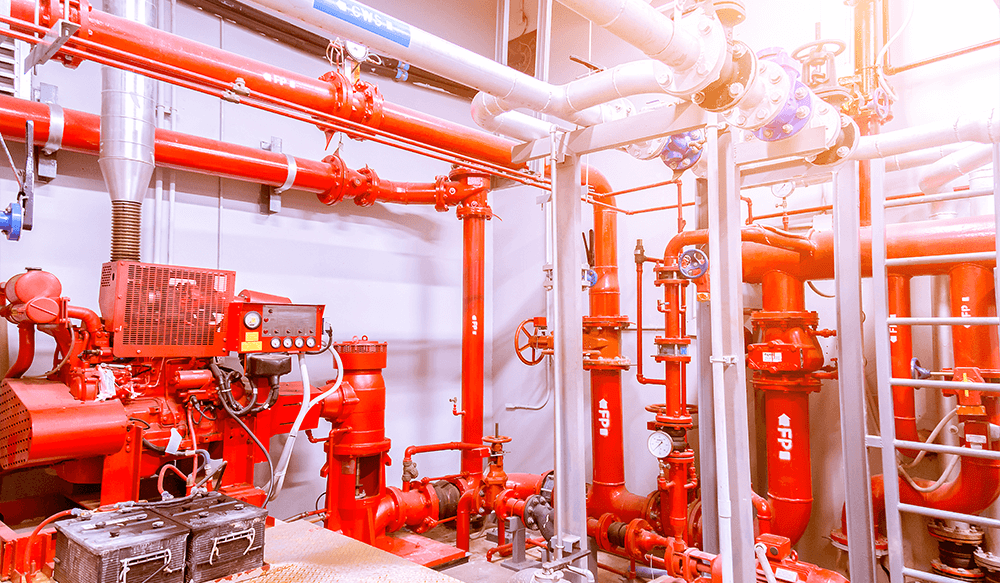
Need to control movement in your piping system? A pipe anchor could be exactly what you’re looking for.
But with so many types of pipe supports and terms out there, it can be hard to know what a pipe anchor is—let alone what it can do for your system.
Here’s an in-depth look at what pipe anchors do and how to use them in your piping system to lend extra support.
Types of Pipe Anchors
A pipe anchor is a pipe support that’s designed to control movement and stop a pipe from shifting in three dimensions. Essentially, traditional pipe anchors are meant to fix pipes to a spot and stop pipes from moving. However, what many don’t realize is there are two types of pipe anchors: fixed anchors and directional anchors.
Fixed Pipe Anchors
Fixed pipe anchors pin a pipe to a spot and keep it from moving in three rotational directions: up, down, and sideways. You can usually do this by welding the pipe directly to the support or by using a stanchion. If you use a stanchion, you have the option of welding it directly to the support beam or bolting it down.
Still, there are some factors to consider if you decide to weld your pipe anchor:
- Corrosion under insulation: It is important to keep welded areas clean and dry to prevent corrosion under insulation.
- Chloride stress corrosion cracking: If your system is operating in a salt-heavy area, you’ll want to heat-treat welds and inspect them regularly. In some instances, welds can be attacked by chloride stress corrosion cracking and break down.
- Lack of flexibility: Once you’ve welded, it is difficult to make adjustments without pulling out full sections of pipe and re-welding. This is where adjustable pipe supports offer a distinct advantage if you plan to make upgrades or need to make changes to supports.
One final word of caution: When using a fixed pipe anchor, it is important to make sure it includes insulation that separates dissimilar metals and reduces friction. Otherwise, you could be trapping corrosive metals together with little way to clean surfaces or stop corrosion.
Directional Pipe Anchors
Directional anchors allow some movement, but they focus movement in one direction. These come in handy if you need to steer pipes away from surrounding structures. They can also reduce corrosion and wear by spreading out movement—minimizing the potential damage from point loading.
There are many pipe restraints you can use to anchor a pipe or redirect movement without stopping all motion. For instance, VibraTek Hold Down Clamps stop pipes from bouncing or shifting. At the same time, they absorb vibrations, stop metal-to-metal contact, and allow the pipe to move axially.
How Can Pipe Anchors Improve Your Piping System?
Pipe anchors are designed to control one basic problem: movement. Movement can be a destructive force in piping systems. Here are some basic effects of movement that quality anchors can prevent:
- Thermal expansion: Thermal expansion can cause pipes to shift and scrape on surrounding surfaces. Quality pipe anchors will account for this movement and encourage pipes to move away from destructive objects.
- Energy loss: When pipes move, the liquids inside them slosh around, and flow is interrupted. Every time flow is disrupted, it pulls energy from your piping system.
- Vibration abrasions: High-powered piping systems often produce vibrations that rumble through pipes. If pipes are unrestrained, these reverberations can cause pipes to pound against hard surfaces and break.
- Pipe ruptures: Without pipe anchors to control movement, pipes can slide into surroundings, rupture, and burst.
What to Consider When Installing Pipe Anchors
As they help keep movement under control, pipe anchors also serve a broader purpose: improving the performance and longevity of your piping system. That’s why it is important to pay attention to a few key factors when you’re picking out and installing pipe anchors:
- Pipe support materials: Pipe anchors need to be able to withstand high pressure and the impact of heavy pipes. That’s why they should be made of quality materials, such as high-grade steel.
- Pipe insulation: If you want to avoid the damage of metal-on-metal contact, make sure your pipe anchors include protective insulation.
- Corrosion resistance: Pipe anchors that are equipped with hot-dip galvanizing, anti-corrosive materials, or protective coatings can help keep corrosion out of your piping system.
Learn Everything You Need to Know About Pipe Restraints
This breakdown of pipe anchors should help you start controlling pipe movement and strengthening your piping system. But when it comes to discovering everything pipe restraints can do, we’ve just scratched the surface.
Want a deeper understanding of restraints? Read our Complete Guide to Pipe Restraints for a detailed look at pipe restraints, including how they can improve your piping system’s performance.






